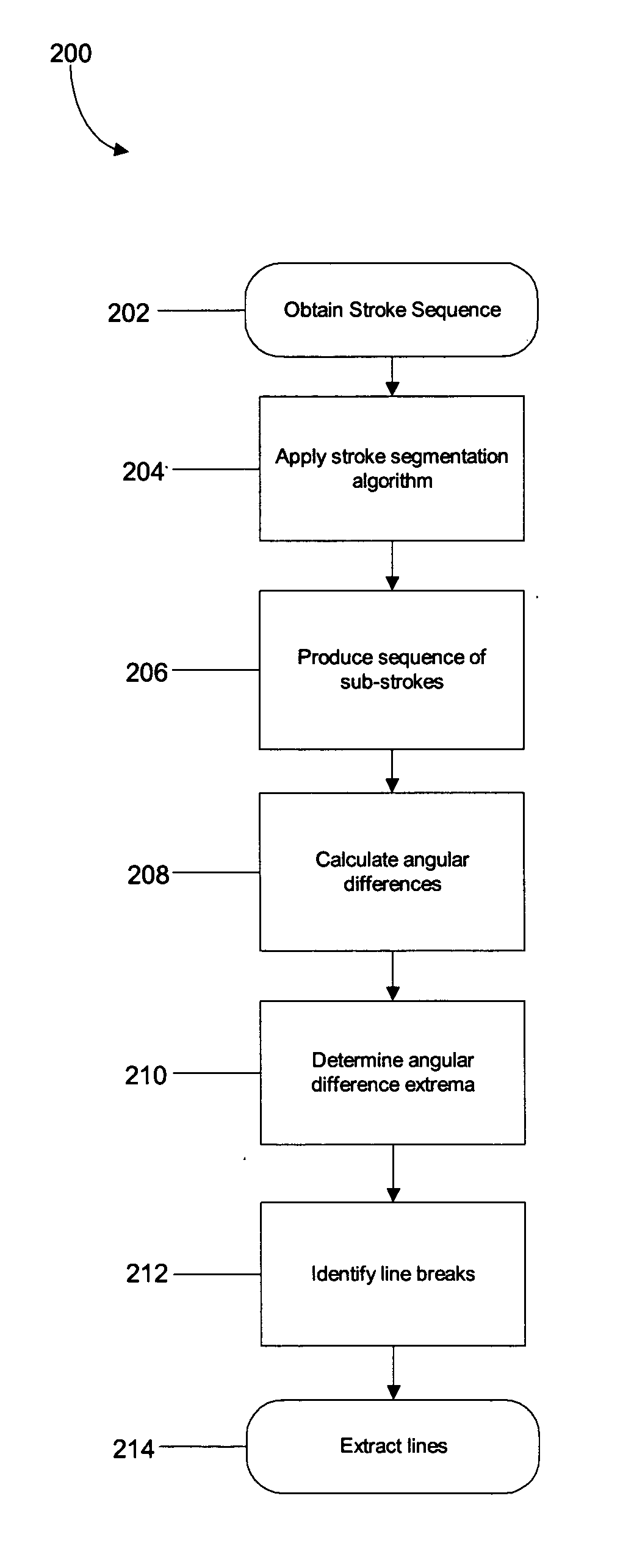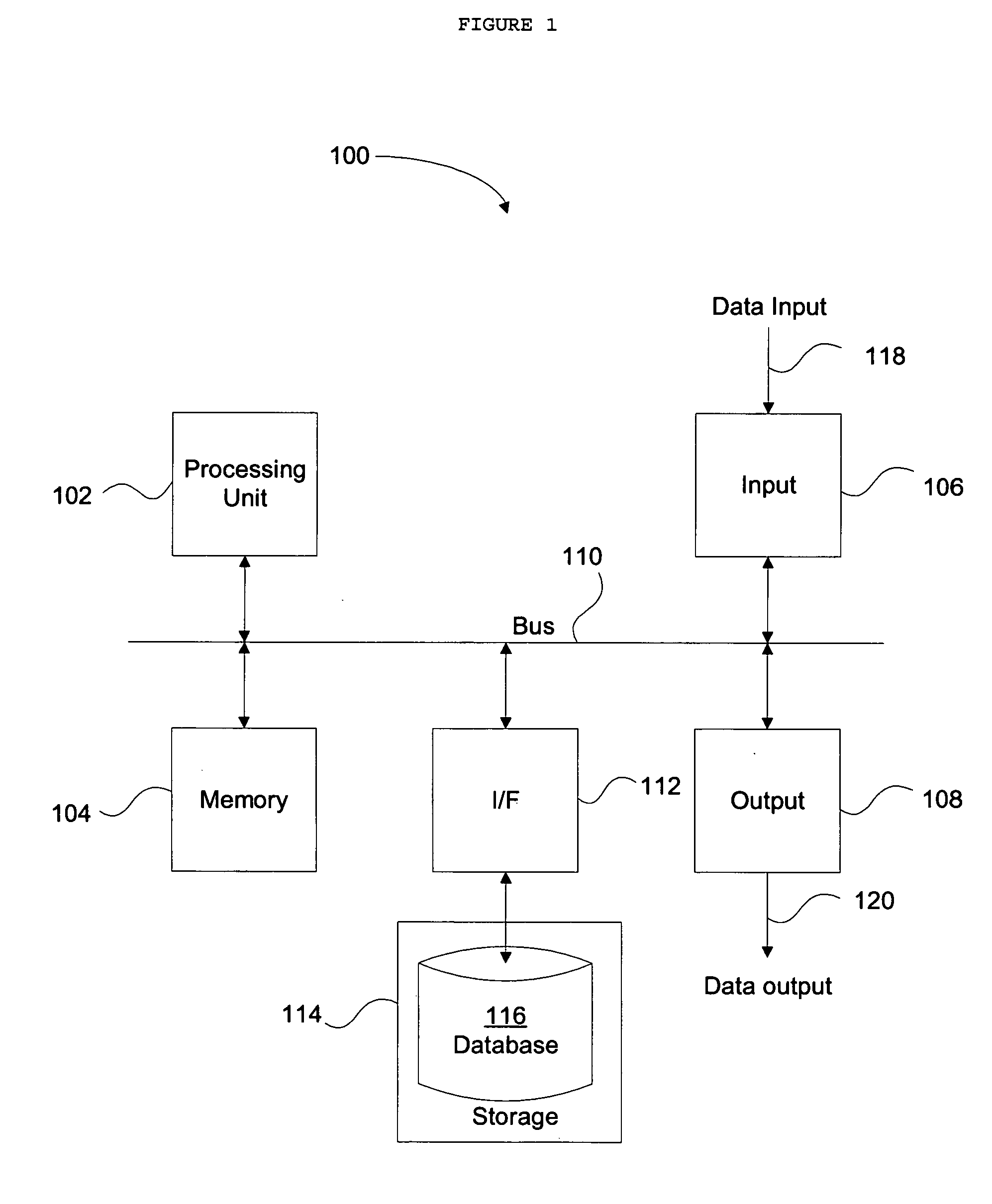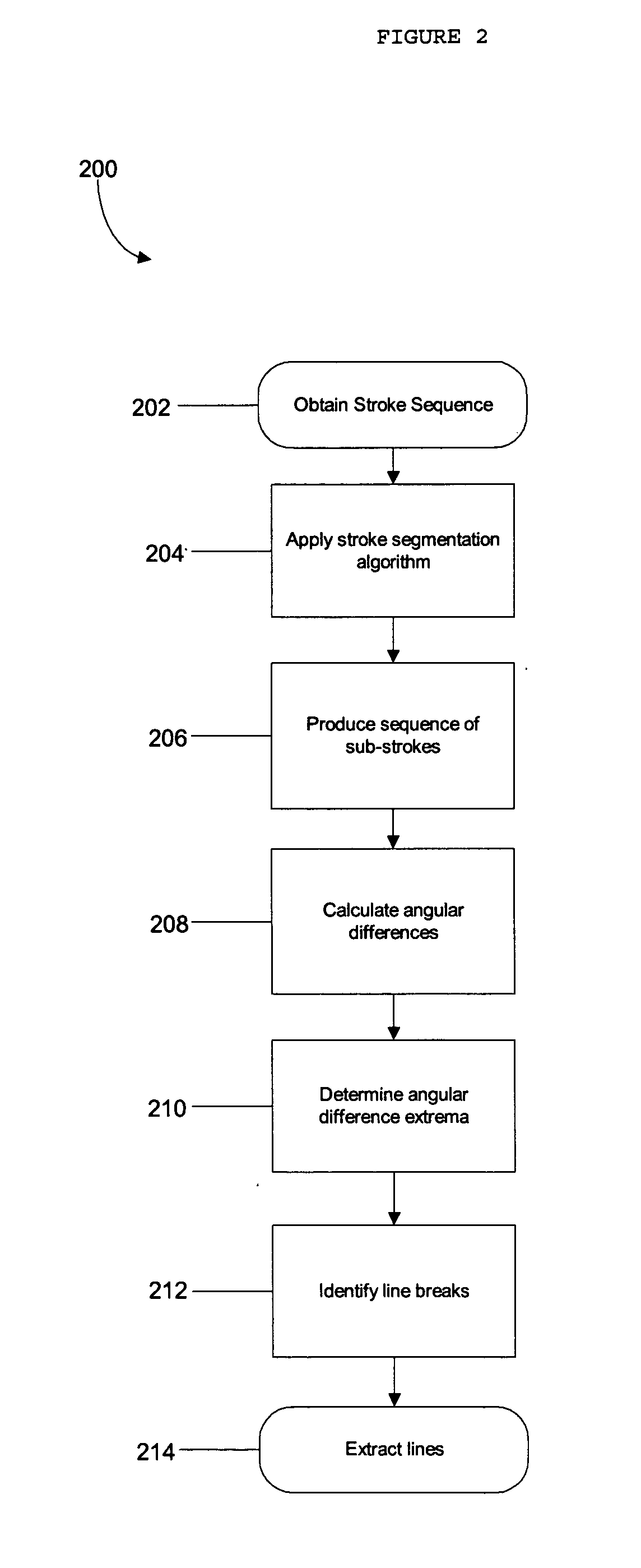Line extraction in digital ink
a digital ink and line extraction technology, applied in the field of line extraction in digital ink, can solve the problems of slow handwriting recognition, low handwriting recognition accuracy, and difficult handwriting search handwritten text, and achieve the effect of not slowing down further ink processing and being computationally inexpensiv
- Summary
- Abstract
- Description
- Claims
- Application Information
AI Technical Summary
Benefits of technology
Problems solved by technology
Method used
Image
Examples
experiment b
[0110] Experiment B
[0111] The second experimental data set comprised 14 full pages of cursive text copied from a novel by a single writer. Again, line extraction was evaluated, the difference being that all lines were approximately horizontal (they were written using guide ruler lines). On average each page contained 28 lines which were often touching and their length sometimes changed markedly. In total, the data contained 406 lines or 392 line breaks which were manually ground truthed (exactly as in Experiment A). Examples of the handwritten pages are shown in FIG. 12.
experiment c
[0112] Experiment C
[0113] The third experiment was conducted to test the suitability of the text line orientation estimation algorithm. The data consisted of 4208 horizontal English text lines manually segmented from a number of different handwritten documents and manually rotated to arbitrary angles between -180 and 180 degrees which were recorded as ground truth.
[0114] The algorithm was implemented on a 1.7 GHz Pentium PC running Windows 2000 using Visual C++. Experiment A was timed and completed in 1.85 seconds excluding the time to load the ink from disk. This is equivalent to approximately 0.1 seconds per page on average or approximately 4 msec on average per extracted line. Experiment B was timed and completed in 3.96 seconds (again, excluding I / O). This is equivalent to approximately 0.28 seconds per page on average or approximately 9.8 msec on average per extracted line. The difference in time between Experiment A and Experiment B is due to the smaller length of the text lin...
PUM
 Login to View More
Login to View More Abstract
Description
Claims
Application Information
 Login to View More
Login to View More - R&D
- Intellectual Property
- Life Sciences
- Materials
- Tech Scout
- Unparalleled Data Quality
- Higher Quality Content
- 60% Fewer Hallucinations
Browse by: Latest US Patents, China's latest patents, Technical Efficacy Thesaurus, Application Domain, Technology Topic, Popular Technical Reports.
© 2025 PatSnap. All rights reserved.Legal|Privacy policy|Modern Slavery Act Transparency Statement|Sitemap|About US| Contact US: help@patsnap.com



